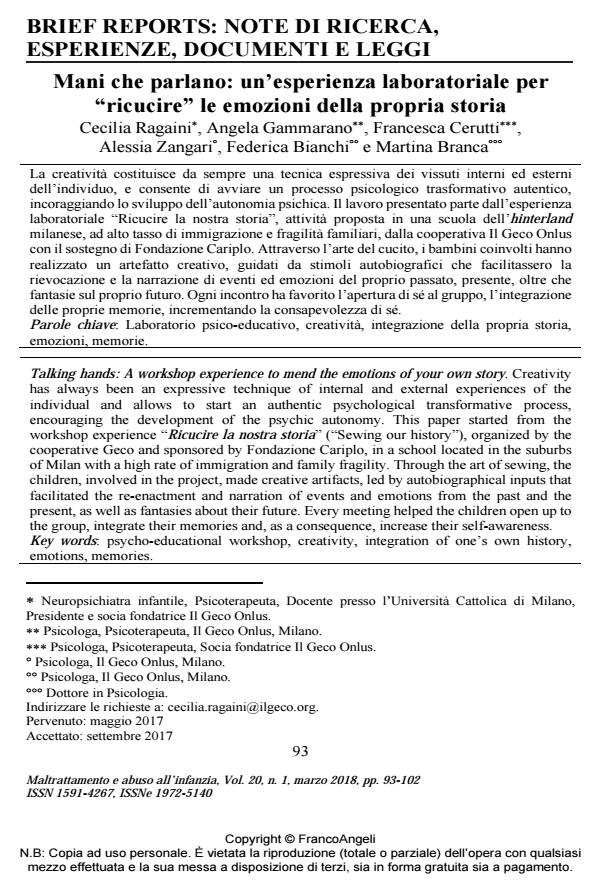Talking hands: A workshop experience to mend the emotions of your own story
Journal title MALTRATTAMENTO E ABUSO ALL’INFANZIA
Author/s Cecilia Ragaini, Angela Gammarano, Francesca Cerutti, Alessia Zangari, Federica Bianchi, Martina Branca
Publishing Year 2018 Issue 2018/1
Language Italian Pages 10 P. 93-102 File size 174 KB
DOI 10.3280/MAL2018-001007
DOI is like a bar code for intellectual property: to have more infomation
click here
Below, you can see the article first page
If you want to buy this article in PDF format, you can do it, following the instructions to buy download credits

FrancoAngeli is member of Publishers International Linking Association, Inc (PILA), a not-for-profit association which run the CrossRef service enabling links to and from online scholarly content.
Creativity has always been an expressive technique of internal and external experiences of the individual and allows to start an authentic psychological transformative process, encouraging the development of the psychic autonomy. This paper started from the workshop experience "Ricucire la nostra storia" ("Sewing our history"), organized by the cooperative Geco and sponsored by Fondazione Cariplo, in a school located in the suburbs of Milan with a high rate of immigration and family fragility. Through the art of sewing, the children, involved in the project, made creative artifacts, led by autobiographical inputs that facilitated the re-enactment and narration of events and emotions from the past and the present, as well as fantasies about their future. Every meeting helped the children open up to the group, integrate their memories and, as a consequence, increase their self-awareness.
Keywords: Psycho-educational workshop, creativity, integration of one’s own history
Cecilia Ragaini, Angela Gammarano, Francesca Cerutti, Alessia Zangari, Federica Bianchi, Martina Branca, Mani che parlano: un’esperienza laboratoriale per "ricucire" le emozioni della propria storia in "MALTRATTAMENTO E ABUSO ALL’INFANZIA" 1/2018, pp 93-102, DOI: 10.3280/MAL2018-001007